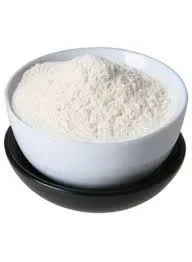
Oct . 31, 2024 11:10 Back to list
A Comparative Analysis of HPMC and HEC in Pharmaceutical Applications
HPMC vs HEC A Comparative Analysis
Hydroxypropyl methylcellulose (HPMC) and hydroxyethyl cellulose (HEC) are both prominent cellulose derivatives widely used in various industrial and pharmaceutical applications. Despite their shared cellulose origin, these two compounds exhibit distinct chemical structures and properties, which impart unique functionalities suitable for different uses.
HPMC vs HEC A Comparative Analysis
On the other hand, HEC is derived from cellulose by reacting it with ethylene oxide, leading to the introduction of hydroxyethyl groups. This composition grants HEC unique rheological properties, particularly its ability to create viscous solutions at low concentrations. HEC is predominantly used in industries like construction, paints, and personal care products due to its thickening and stabilizing properties. In the cosmetic sector, HEC functions as a suspending agent, ensuring the even distribution of active ingredients in formulations such as lotions and gels.
hpmc vs hec

The solubility characteristics of HPMC and HEC also differ significantly. While HPMC is typically soluble in both hot and cold water, HEC shows more pronounced solubility in hot water. This attribute is crucial for applications requiring quick dissolution and viscosity adjustments depending on temperature changes. In formulations where consistency and stability over a range of temperatures are vital, HPMC often outperforms HEC.
Furthermore, the two polymers exhibit different interactions with other excipients and ingredients. HPMC can enhance the bioavailability of active pharmaceutical ingredients, while HEC's compatibility with diverse formulations makes it a versatile additive in various products. This flexibility is particularly advantageous in formulating personal care items, where the balancing of viscosity, stability, and sensory attributes is essential.
In conclusion, while both HPMC and HEC are valuable cellulose derivatives with significant applications in various industries, the choice between them depends on the specific requirements of the formulation. HPMC is often favored in pharmaceutical applications due to its superior solubility and bioavailability enhancements, whereas HEC is preferred in construction and personal care due to its effective thickening and stabilizing properties. Understanding the differences between these two compounds is essential for formulators seeking to optimize their products effectively.
-
Unlocking the Benefits of HPMC Products: A Gateway to Versatile Applications
NewsAug.07,2025
-
Unleashing the Potential of HPMC Ashland: A Comprehensive Look
NewsAug.07,2025
-
Tile Bonding Cellulose: The Key to Superior Adhesion and Durability
NewsAug.07,2025
-
Hydroxypropyl Methylcellulose Powder: The Versatile Component in Modern Pharmaceuticals
NewsAug.07,2025
-
Hydroxyethyl Cellulose: The Versatile Solution for Various Industries
NewsAug.07,2025
-
Hydroxyethyl Cellulose (HEC): The Versatile Polymer for Various Applications
NewsAug.07,2025







